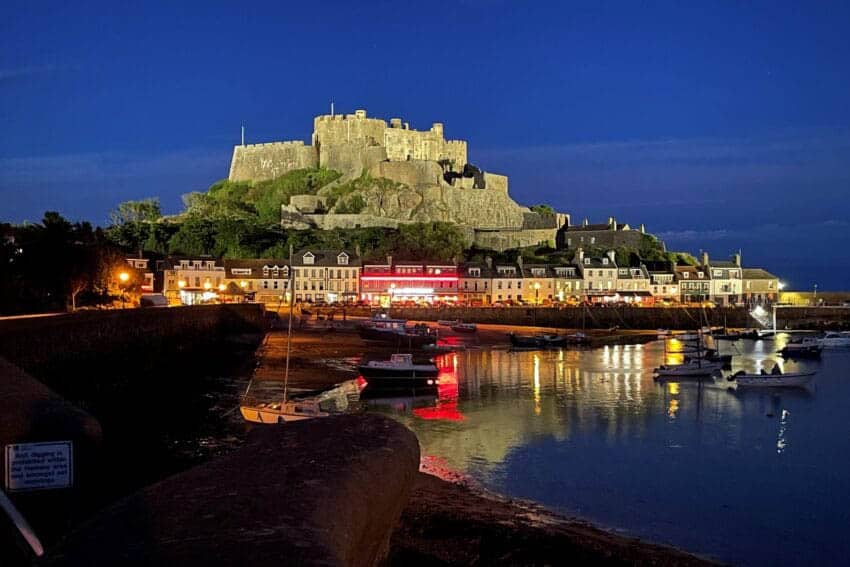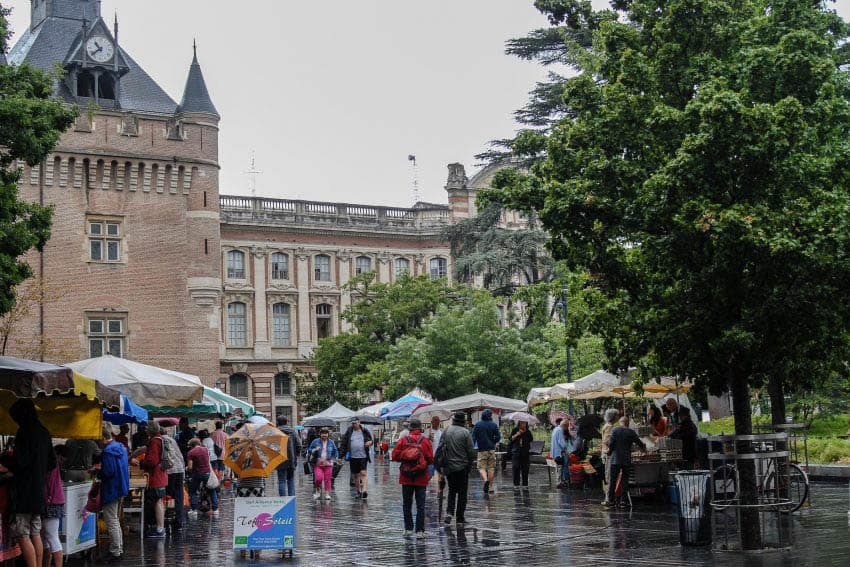
Barging the Canal across France
By Kent E. St. John
Monsieur Paul Riquet may not be known to many Americans but if you cruise the Canal du Midi once, you will praise him to high heaven. Back in 1666, M. Riquet spent his fortune and left his family in debt for fifty years after his death to build what should be known as an engineering miracle, the Canal du Midi.
The grand scheme that was designed for commerce is now one of the best travel experiences to explore. The canal is located in the Languedoc-Roussillon region in France, just now hitting the traveler’s radar.
This area is gaining a reputation as France’s “second Mediterranean.” It roughly covers the sun-kissed area from Montpellier to the Spanish border and curves to the Pyrenees Mountains.
On this trip I carried a Baedeker’s Guidebook dated 1914 to compare the area’s march in time. An interesting side note is that spies and military personal used Baedeker’s Guide Books for accuracy long before the click on Google existed.
Languedoc is covered with cities and villages with ancient pedigrees and prodigious producers of able-bodied wines. The history of the area is filled with events that long shaped the course of France’s history. The people have a marvelous disposition perhaps due to the Catalan influence or most likely it’s due to the beauty and relaxed pace of the area.

In my book it is best explored by self-cruising the canal’s meandering roads of water. No license is needed and with a few instructions you can head off at a relaxing pace, lodging and transportation wrapped into one package, Bon Voyage!
Marvelous Montpellier
With any luck your entry into the region will be Montpellier, now a booming university city as it was in 13th century when students like Nostradamus went to study medicine here.
True to form the Baedeker’s folded map covered the essential, winding streets and sites. However, whoever used the edition then would be shocked by the growth done in fine taste.
Today a quarter of the city’s population is still students, and corporations such as IBM have gathered here. Credit for the wonderful growth must go to the longtime irrepressible former socialist Mayor Georges Freche; Montpellier marches at its own pace.
For me the pace was set by wandering the old part of the city with coffee on the Place de la Comedie, locally known as the l’Oeuf, or the egg. The opera building anchors one of Europe’s largest open spaces leading to the Esplanade Charles de Gaulle, just stunning to lose one’s self in.
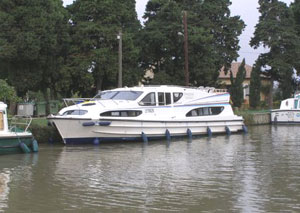
The Magnifique
The Ecusson section of the old city is strictly pedestrian which was wonderful especially since I frequently found myself stopping and gazing at the magnificent architecture and hidden squares. Better yet, the city doesn’t get overladen with tourists; as wonderful as it is that may soon change! If the weather is hot and the Mediterranean Sea is your goal, an easy ten-minute train to the fishing port of Sete will fit the bill.
Beziers: Older Than the Romans
The statue and streets named for M. Riquet made Beziers a natural place to pick up my new command, the sleek “Magnifique” owned by the Connoisseur Boat Rental Company.
I felt immediately impressed by the sweet layout and open deck space. I was just as impressed with the layout of Beziers itself, compact on a hillside and twisting medieval streets. My Baedeker’s 1914 book described Beziers as, “finely situated on a hill, is a pleasant town of ancient origin,” a very apt description today.

Also still true is the fact that Beziers produces good red wines, perhaps one reason the Canal du Midi was built. It was also one of the biggest scenes of the troubles between the Cathars and Catholics in the Albigensian Crusades in 1209.
The crusading papal troops found that most of the town, after refusing a chance to flee, sought refuge in the churches in the town. When asked how to distinguish the Cathars from Catholics the Abbot of Citeaux replied, “Kill them all; God will know his own.” Twenty thousand people were slaughtered.
Feeling far mellower than the Abbot, I purchased some croissants at the quay as the October sun rose over the nesting area of boats that ply the canal, the open curtain in my cabin assured breakfast duty.
Quietly I heated the water for coffee and set plates for my fellow travelers, Brit journalists sharing the comfy space of the “Magnifique.” It was a job I took throughout my journey. Soon the motor was started and we headed to the famed Locks of Fonserannes, all seven of them
Getting a Lift
One thing to remember is that the locks on the canal only operate at certain hours and for Fonserannes, the mother of all locks, we were right in time. This was when the amazing engineering from the 17th century was so well displayed. In the short space of a few hundred feet, we traveled up a series of seven locks, water gushing in and lifting the “Magnifique” up and further up yet.

Ropes thrown and all hands on deck was exhilarating and the sense of pride at our new found skills satisfying. It was, however, not the last miraculous feature of the canal we would see.
After an hour of cruising down the plane tree-lined canal with a few celebratory glasses of fine wine, we arrived at the Malpas Tunnel, just past the fine canal-side town of Colombiers, dating from the 13th century.
Situated near the ancient Roman town of Enserune Oppididum is the Maison de Malpas, a visitor’s center and place to purchase some fine food from the Accent d’ Oc and wines from Pays d’Enserune. Perfect for an incredible lunch.
The Malpas Tunnel itself created a problem that M. Riquet secretly solved. The particularly unstable soil caused Louis IVX’s minister Colbert to shut down the construction. Due to the costs of rerouting M. Riquet pulled workers from other parts of the project to work in secret. In less than a week the 541-foot-long tunnel was completed, the first canal tunnel ever built.
It’s Plane to See
As the Canal was built, almost immediately 45,000 plane, poplar and pine trees were planted on the banks. The reason was to keep the banks of the canal firm; today they are appreciated as wonderful shade from the Mediterranean sun.
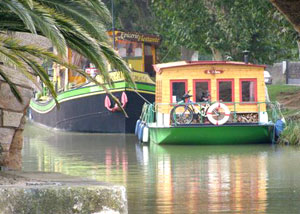
At the slow 4 MPH pace, it is the little things that loom large on your radar, stone bridges and hamlets pass by almost as if you’re going back in time.
In my mind, the hamlet that best describes life along the canal is Le Somail, so enchanting and quirky. Le Somail has an old stone bridge as its center with museums that do not fit anywhere else, such as the Musee des Chapeaux or hat museum, “history through the study of headgear.”
Many of the stone buildings served as a place where the original bargemen rested and restocked. As the party we gave on the decks of the Magnifique raged above, I sipped a glass of Minervois red wine in my berth below. There I paged through my 1914 Baedeker’s Guidebook, it was gratifying to see little has changed. Don’t mess with perfection!
What you Need to Know
The last time I flew Air France was over on the Concorde and back in coach, I wasn’t impressed. Today I have to say that the flying experience on AF was just great! The connection to Montpellier seamless and onboard service better than average. The food was just fine and service complete. Click here for their info: AirFrance.com
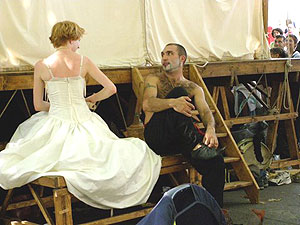
While the guidebooks do a good job, this website is by far the best place for info on the region: SunFrance.com provided info from insiders. The region’s tourism board is well adept to helping plan a trip to France’s newest hotspot!
Boat Rental
Cruising the Canal is easy and affordable not to mention comfortable. My boat, the “Magnifique,” owned by the Connoisseur Boat Rental Company, was extremely livable and could sleep up to eight people. The rooms were nicely laid out and the two rear berths have their own showers and toilets. The galley was full size and living area large, the top deck was an extra bonus. A license is not required and the boat easy to handle.
Food and Wine
The region of Languedoc-Roussillon is jam-packed with vineyards and the wine has steadily gathered the attention it deserves. Besides visiting the vineyards themselves several communities of growers have joined in coops and have tasting rooms.
One of the best was in Homps and featured growers from the Minervois. The best food and wine combo I found on the canal was right at the Malpas Tunnel and was called La Maison du Malpas. The combination of cheese, wine and local food products made a lunch to remember!
Here are several other good wine sites:
Corbieresweb.com
WineTour-France.com
For a good guide to food:
There is one book I brought along that I highly recommend. It gave a great sense of the Canal du Midi. It is called Floating through France; Life Between the Locks on the Canal du Midi, published by Travelers Tales.”
- Australia: Visiting Three Queensland Islands - July 14, 2015
- Southport Island, Maine: Finding The Perfect Rental - November 18, 2014
- Antigua’s Sailing Week Regatta - May 22, 2013


